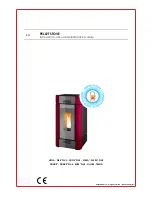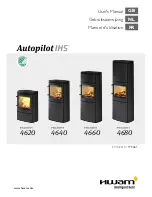
FIRE TESTING
Flame failure device testing
Step 1
Ignite the appliance in accordance with
page 9 and run for 60 seconds.
Step 2
Turn the appliance off to extinguish the
pilot, listen for a snap at the control valve. This
should occur within 60 seconds of the pilot flame
being extinguished. The snap sound will be the
magnet disengaging, and thus shutting off the flow
of gas to the pilot and burner.
Spillage Test
A qualified gas engineer should Perform a spillage
test as follows:
Step 1.
Close all doors and windows.
Step 2
Light the appliance and set to the high rate.
Step 3
. Allow fire to warm up for 10 minutes.
Step 4.
Position the smoke match at the back of the
fire centrally beneath the draught diverter as shown
in
Fig 9.
All of the smoke should be drawn into the fire.
If this does not occur the appliance must be
disconnected and the flue checked.
Step 5.
If there is an extractor fan in any room,
this must be turned on and any doors between it
and the fire left open, repeat the spillage test.
Repeated operation of the spillage monitoring
system indicates that there maybe a flue draw
problem. In this situation no more attempts at
operating the appliance should take place and your
gas engineer should be contacted.
Warning: The spillage monitoring system is a
safety feature required by law and must not be
adjusted or put out of action by the installer. If
the spillage monitoring system or any of its parts
are to be replaced, only original manufacturers
parts are to be used.
Fig. 9
Note:
The fire will give off non-toxic fumes when
first used. This is perfectly normal and is due to the
paint curing, it will disappear after the first few
hours. Once the spillage test is complete open
windows and doors to ventilate the area.
16
Becton Bunny & Becton 7 mk3 Gas stoves
INSTALLATION
















































